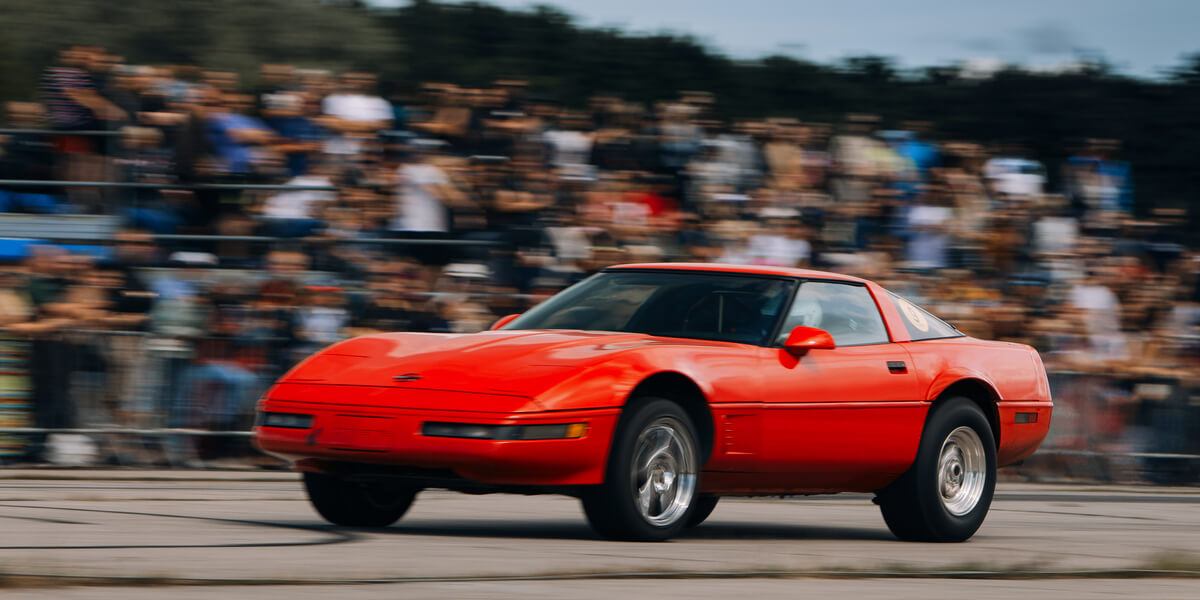
The car community has recently been swept by the news, stories, and rave reviews about the new 2020 Corvette C8. It seems like one of the oldest names in the sports car world has been given a new life and a whole new generation of admirers. However, although revolutionary, advanced, and truly impressive, the C8 isn't the most important generation in modern Corvette history.
That honor goes to the venerable Corvette C4, introduced in 1984. The wedge-shaped C4 single-handedly saved the breed and helped it survive well into the '90s. It introduced numerous firsts and established a loyal fan base. Even on export markets, it sold well, won championships, and still is one of the best budget-oriented sports cars you can find. Without the C4, the Corvette would be discontinued and forgotten a long time ago.
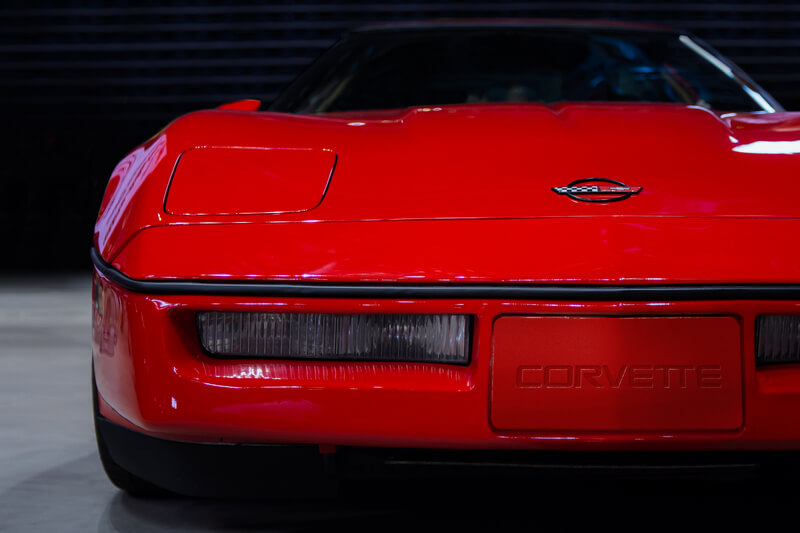 1984 Chevrolet Corvette C4
1984 Chevrolet Corvette C4History
Back in the late '70s and early '80s, Corvette was a joke amongst the sports car fans. With chassis dating from the early '60s, and warmed-up "coke-bottle" design, the late C3 Vette was desperately outdated and underpowered. Amazingly, it sold in decent numbers, but with 190 hp from a choked 5.7-liter V8, it was nothing more than the pale shadow of its former self.
Europeans dominated the sports car market, and, for the first time, Japanese cars and Corvette didn't have the firepower or technology to fight the competitors. GM was well aware that something had to be done soon and, in the late '70s, established a team of engineers dedicated to one task — to make Corvette great again (no pun intended).
The team started from a clean slate — the C4 generation would be a completely new design, or it wouldn't be. No more C2 or C3 bits, ancient ladder chassis architecture, outdated '60s styling, or underpowered engines. The new Corvette had to be a world-class automobile capable of beating any European or Japanese sports car.
Read more: Ford Mustang Fox Body (78-93) | History of an American Legend
However, the development proved to be long, expensive, and with its share of problems. The completely new chassis required a unique construction process, and lightweight suspension components proved to be demanding to produce. The car was ready for 1982 release, but problems with quality and production delayed it for two more years.
Chevrolet had already decided to kill the C3 generation after the 1982 model year and was left without replacement for 1983 since the car wasn’t ready, and official release was moved to 1984. The Corvette faithful know that no 1983 Corvette was ever offered to the public, and only one pre-production prototype exists, safely kept at the National Corvette Museum.
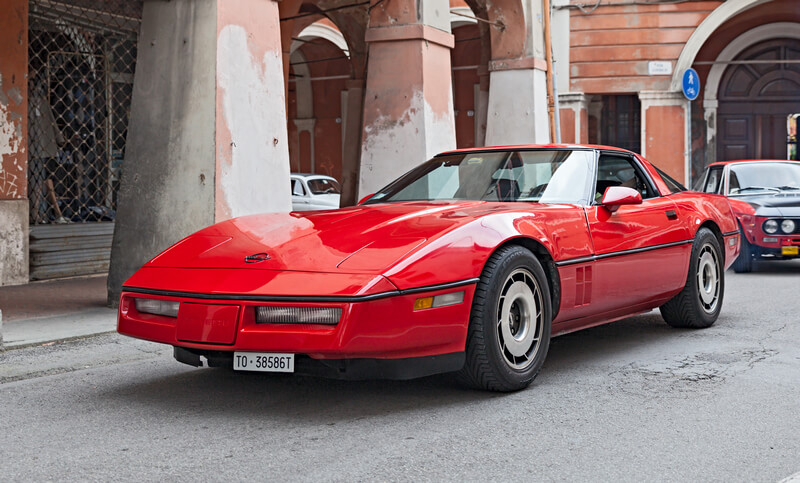
Corvette C4 (1984 to 1992)
When the long-awaited C4 Corvette finally hit showrooms across America, the press and fans were fascinated by the design, details, technology, and driving dynamics. It was indeed a fantastic achievement by the company often criticized for rudimental designs and low quality.
The C4 showcased the future of American sports car legend not only with its cool-looking digital dashboard but with its fuel-injected V8 engine, independent aluminum wishbone suspension, computer-designed exterior, and numerous gimmicks like a Z51 suspension package. For the first time in decades, a Corvette could compete with Porsche, not just in a straight line, but also on the twisty roads.
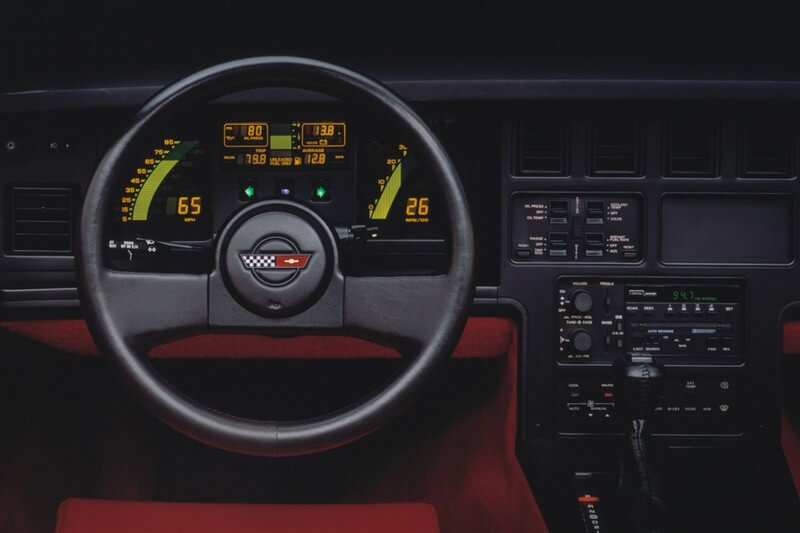 Keeping with its colorful pinball-like instrument cluster, 4th-gen wheels had an ultra modern look with only two spokes.
Keeping with its colorful pinball-like instrument cluster, 4th-gen wheels had an ultra modern look with only two spokes.The first 1984 Corvettes came with a carry-over 5.7-liter "Cross-Fire" V8 with just 205 hp, but in 1985, the 245 hp L98 V8 was introduced with much more power and torque. Finally, the Corvette had some real power and could zip to 60 mph in 5.5 seconds and the top 150 mph. It's not that impressive by today's standards, but 35 years ago, this was exceptionally fast.
Needless to say, customers lined up to get their hands on one, and production doubled, showing that GM was right about this one. Like its predecessors, the standard Corvette was a T-top model with a removable roof panel, and a convertible version was introduced in 1986, resulting in even more sales.
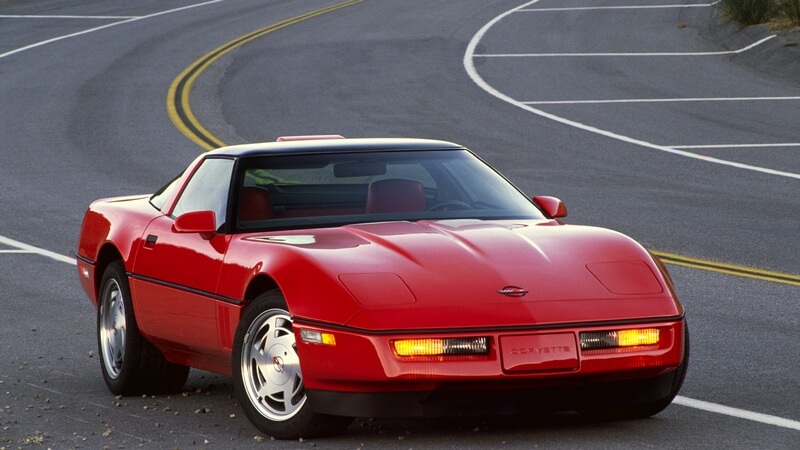 1990 Chevrolet Corvette C4 ZR1
1990 Chevrolet Corvette C4 ZR1Corvette C4 ZR1 (1990 to 1996)
The Corvette engineering team knew that the C4's advanced and lightweight chassis could withstand much more power than the existing V8 could make, which was something that independent tuners like Callaway enthusiastically explored. Consequently, in the late '80, GM gave the green light to develop the "Super Corvette," known as ZR1.
This one was a fantastic machine, with exotic supercar performance but kind of stealth appearance. Under the hood was a brand new LT5 engine co-developed with Lotus, featuring 32-valve heads, special intake, pistons, and other heavy-duty components. The result was 375 hp (later 405 hp) and a 0 to 60mph time of 4.2 seconds — good-enough to beat Ferrari.
Of course, the ZR1 was more expensive and had limited production run, but it showed what the C4 is capable of and how good the construction and engineering work really is. The production ended in 1996 after less than 7000 were made.
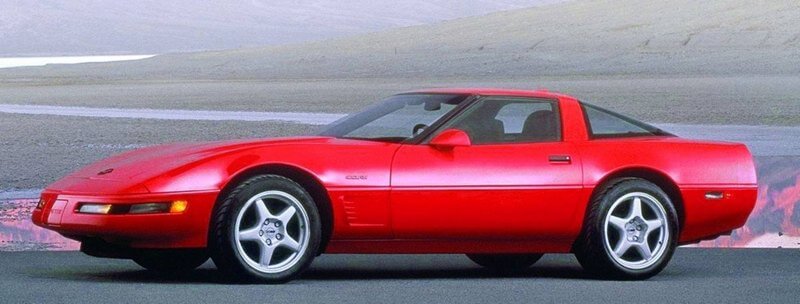 1996 Chevrolet Corvette C4
1996 Chevrolet Corvette C4Corvette C4 (1992 to 1996)
In 1992, after eight very successful model years, Chevrolet decided it was time for an upgrade, both visual and mechanical. The 1992 Corvette C4 received a full redesign with a new front, rear-end look, modern interior, new colors, and a host of new features. More importantly, the suspension and braking were also revised, and a brand new LT1 V8 engine and six-speed transmission became available. With the new 5.7-liter V8 delivering 300 hp, the standard Corvette managed even faster 0 to 60 mph times of around 5 seconds and 160 mph top speed. As expected, the ZR1 model was still the king-of-the-hill with quicker acceleration and a top speed in the 180 mph range.
From 1992 to 1996, Corvette C4 changed very little, and changes were mostly visual. Chevrolet was already working on the C5 generation but kept customers busy with various special edition models like a 330 hp Grand Sport variant. Finally, in 1996 after 11 years of production, C4 was retired after over 350,000 cars were made.
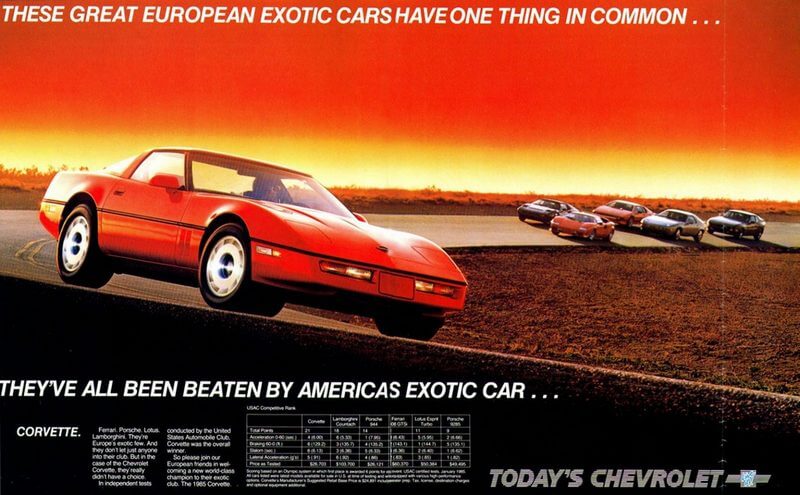 1985 Corvette Ad
1985 Corvette AdLegacy
The Corvette C4 wasn't just important because it was sold in significant numbers and made GM enormous profit. It was important because its success saved the Corvette as a model and guaranteed its future. The chassis design was so good that it was used, with slight modifications, on all subsequent Corvette models until 2020 C8. The C4 kept the flame alive for Corvette fans and marked the return of American performance in the late '80s and early '90s.
